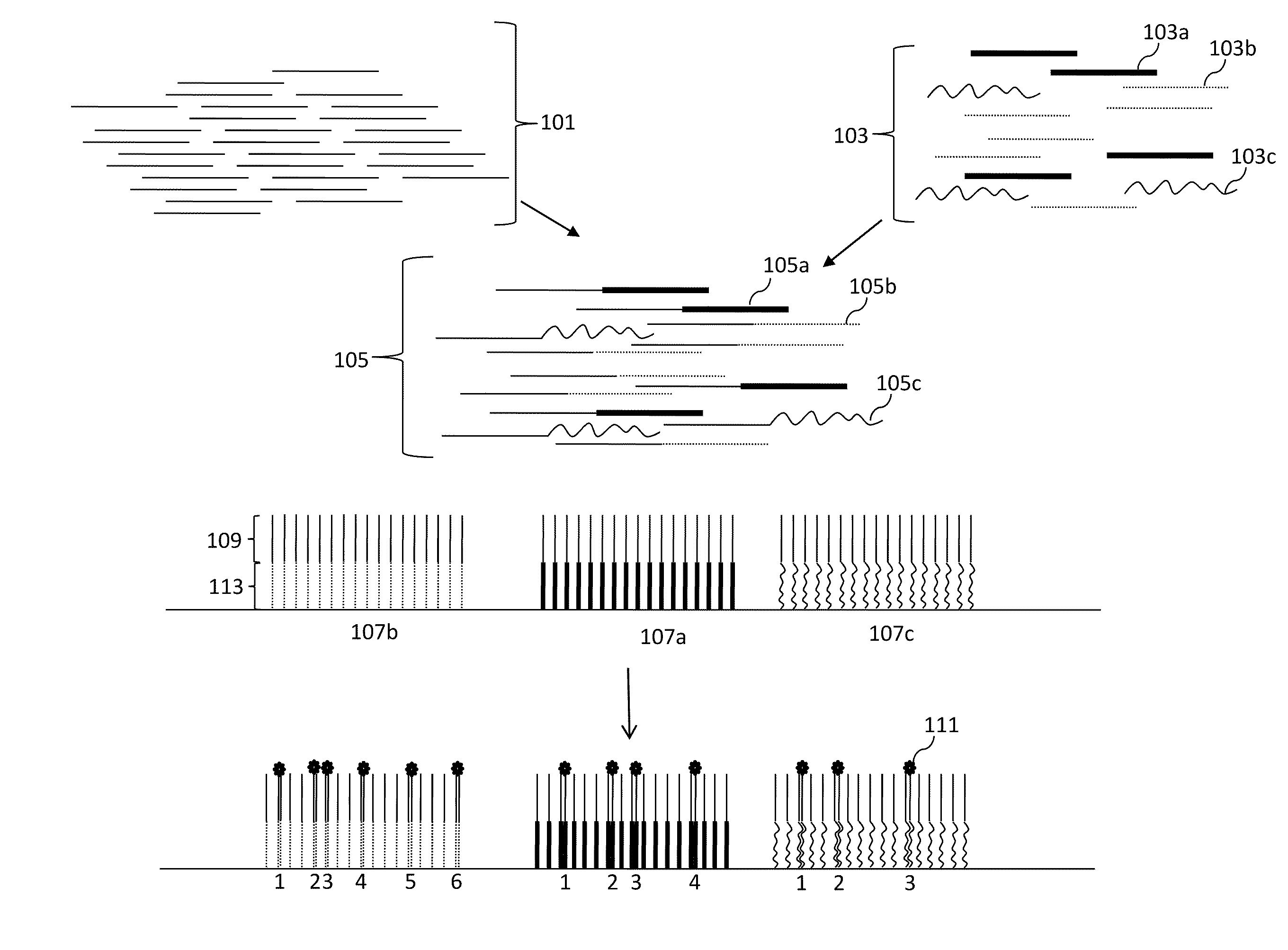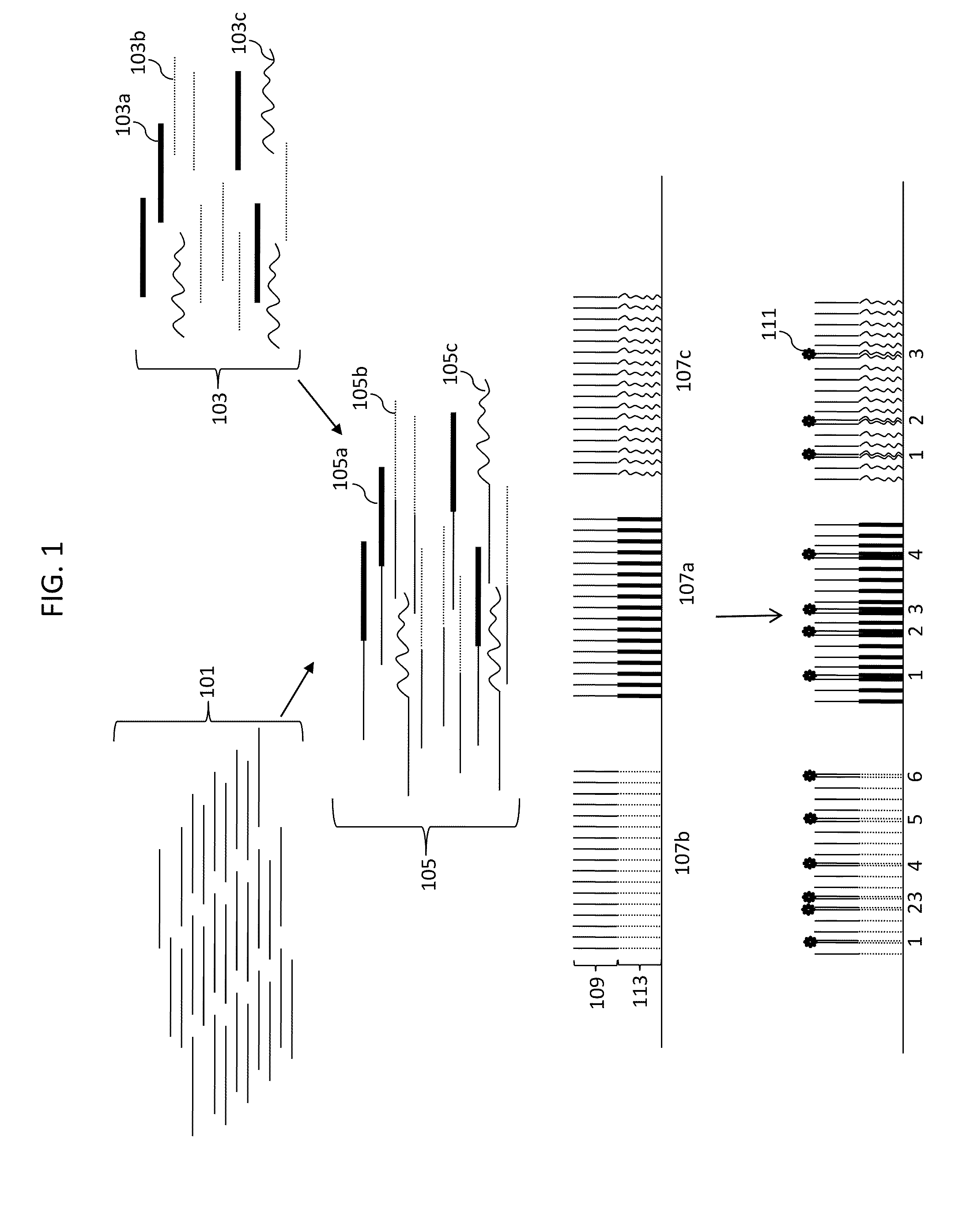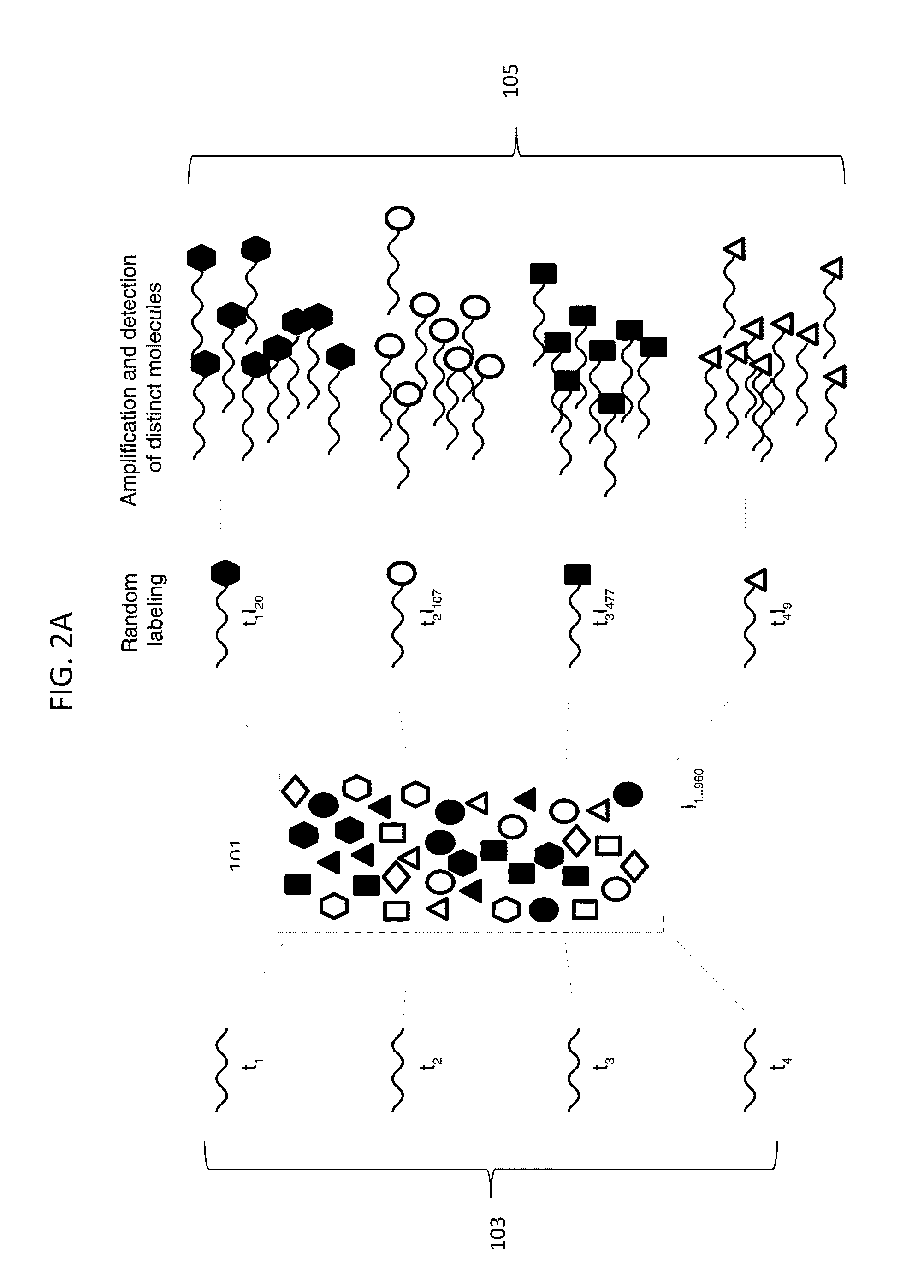Digital Counting of Individual Molecules by Stochastic Attachment of Diverse Labels
a technology of stochastic attachment and counting individual molecules, which is applied in the field of counting individual molecules by stochastic attachment of diverse labels, can solve the problems of few techniques available to determine the absolute number of molecules in a sample, readout signal to noise, etc., and achieve high specificity, high efficiency, and high precision of relative and absolute counting statistics.
- Summary
- Abstract
- Description
- Claims
- Application Information
AI Technical Summary
Benefits of technology
Problems solved by technology
Method used
Image
Examples
example 1
[0241 of a method for selecting a collection of labels starting with all possible 14 mers (414 or ˜268 million possible labels). Step 1: clustering based on the last 7 bases: all sequences with the same last 7 bases are grouped together; within each cluster, randomly pick one sequence, this gives us 11,025 sequences, denoted by set A. Step 2: clustering based on the first 7 bases: all sequences with the same first 7 bases are grouped together; within each cluster, randomly pick one sequence, this gives us 13,377 sequences, denoted by set B. Step 3: get the union set of set A and B, the combined set has 24,073 sequences. Then do clustering based on the middle 6 bases, randomly pick one sequence out of every cluster, this gives us 3,084 sequences, denoted by set C. Step 4: calculate the all-against-all alignment score of set C, which gives us a 3,084×3,084 self-similarity score matrix, denoted by S. Step 5: filter based on the score matrix. If an element of the score matrix S(i,j) has...
PUM
| Property | Measurement | Unit |
|---|---|---|
| length | aaaaa | aaaaa |
Abstract
Description
Claims
Application Information
 Login to View More
Login to View More - R&D
- Intellectual Property
- Life Sciences
- Materials
- Tech Scout
- Unparalleled Data Quality
- Higher Quality Content
- 60% Fewer Hallucinations
Browse by: Latest US Patents, China's latest patents, Technical Efficacy Thesaurus, Application Domain, Technology Topic, Popular Technical Reports.
© 2025 PatSnap. All rights reserved.Legal|Privacy policy|Modern Slavery Act Transparency Statement|Sitemap|About US| Contact US: help@patsnap.com



